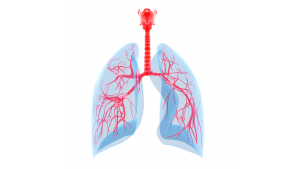According to the American Cancer Society, this year nearly 175,000 Americans will learn they have lung cancer.The one-year survival rate for lung cancer has increased from 34 percent in 1975 to 42 percent in 1998.
Risk Factors for Lung Cancer
Smoking greatly increases your chances of developing lung cancer.
- Other risk factors include exposure to substances like second-hand smoke, arsenic, some organic chemicals, radon, asbestos, air pollution and tuberculosis.
Quitting Smoking
If you quit smoking, the health benefits begin immediately.
- For patients with lung cancer, quitting smoking makes treatment more effective.
- Quitting smoking also reduces the risks of infections, such as pneumonia, improves breathing, and reduces the risks associated with surgery.
- To learn how to quit, talk to your doctor or visit www.smokefree.gov .
Symptoms of Lung Cancer
Some signs and symptoms of lung cancer include:
- Persistent cough, coughing blood or shortness of breath.
- Chest pain.
- Recurring pneumonia or bronchitis.
- Swelling of the neck and face.
- Unexplained weight loss, loss of appetite or fatigue.
Diagnosing Lung Cancer
- A chest X-ray will often reveal a tumor and where it is located. Other tests, such as CT scans and PET scans, can provide more detailed information.
- To be certain if you have lung cancer, tissue from your lung will be removed and analyzed. This is called a biopsy.
- The biopsy may be done during a bronchoscopy, a test where a flexible tube with a light is inserted into your nose or mouth to look at the airways of the lungs.
- A biopsy may also be done with a needle inserted through the skin directly into the tumor under CT guidance.
Types of Lung Cancer
Non-small cell lung cancer and small cell lung cancer are the two main types of lung cancer.
- Non-small cell lung cancer is the most common type of lung cancer. It often grows and spreads less rapidly than small cell lung cancer. There are three types of non-small cell lung cancer — squamous cell carcinoma, adenocarcinoma and large cell carcinoma.
- Small cell lung cancer is less common than non-small cell lung cancer. It grows more rapidly and is more likely to spread to other organs in the body.
- Lung cancer usually begins in one lung. If left untreated, it can spread to lymph nodes or other parts of the chest, including the other lung. Lung cancer can also metastasize (or spread) throughout the body to the bones, brain, liver or other organs.

Treatment for Lung Cancer
Lung cancer treatment depends on several factors, including the type and size of the cancer, its location, and your overall health. Typically, several different treatments and combinations of treatments will be used to combat lung cancer. During treatment, a team of doctors may be involved in your care, including a radiation oncologist, a medical oncologist and a surgeon.
- Non-small cell lung cancer may be treated first with surgery. Your doctor may also suggest radiation therapy or chemotherapy either alone or in combination.
- Small cell lung cancer is often treated with chemotherapy and radiation therapy either at the same time or one right after the other.
Understanding Radiation Therapy
Radiation therapy, sometimes called radiotherapy, is the careful use of radiation to safely and effectively treat many different kinds of tumors.
- Doctors called radiation oncologists use radiation therapy to try to kill tumors, to control tumor growth or to relieve symptoms.
- Radiation therapy works within tumor cells by damaging their ability to multiply. When these cells die, the body naturally eliminates them.
- Healthy cells near the tumor may be affected by radiation, but they are able to repair themselves in a way tumor cells cannot.
External Beam Radiation Therapy
External beam radiation therapy involves a series of daily radiation treatments targeting your lung tumor.
- Radiation therapy treatments are delivered in a series of daily sessions. Each treatment itself is painless and will last less than 30 minutes, Monday through Friday, for several weeks.
- 3-dimensional conformal radiotherapy (3D-CRT) combines multiple radiation treatment fields to deliver precise doses of radiation to the lung tumor. Tailoring each of the radiation beams to accurately focus on the tumor targets the cancer while protecting nearby healthy tissue.
- Intensity modulated radiation therapy (IMRT) is a form of 3D-CRT that modifies the radiation by varying the intensity of each radiation beam. This technique allows a precise adjustment of radiation doses to the tissues within the target area, possibly allowing a higher radiation dose to the tumor and keeping more radiation away from nearby normal tissues. IMRT is still being studied for lung cancer.
- Your radiation oncologist may recommend applying radiation to the brain after successfully treating small cell lung cancer. Called prophylactic cranial irradiation, or PCI, this treatment is not recommended for all patients.
Brachytherapy
In some cases, your doctor may recommend brachytherapy. Also called internal radiation, brachytherapy involves placing radioactive material into a tumor or its surrounding tissue.
- During bronchoscopy, one or two thin plastic tubes called catheters will be placed down your nose and into the airways of the lung.
- The tube or tubes are then connected to a brachytherapy machine. This holds the radioactive source, which is in the form of a ribbon with radioactive seeds. Your doctor slides the ribbon into the tube in your lung so the seeds are next to the tumor.
- The ribbon will be left in place from a few minutes to a few days.
Possible Side Effects
Patients often experience little or no side effects from radiation therapy and are able to continue normal routines.
- Side effects are temporary and usually limited to the area that received radiation.
- Possible problems include skin irritation, difficulty or pain when swallowing, shortness of breath, and fatigue.
- Talk to your doctor about any discomfort you feel. He or she may be able to provide drugs and other treatments to help.